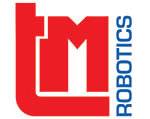Microsoft HoloLens gets real with robotics, surgery, architecture
Fetch Robotics' Fetch & Freight
Planting Trees With Drones
NHL Goal Celebration Hack With A Hue Light Show And Real Time Machine Learning
AGROBOT: Strawberry Harvesters
Rethinks New Robot: Sawyer
Star Wars' BB-8
NASA's Modular Robotic Vehicle (MRV)
3D Robotics' Solo
DJI Phantom 3
QinetiQ North America Introduces DriveRobotics
Gear Generator
Lumipen 2: Robust Tracking for Dynamic Projection Mapping
Festo BionicANTs and eMotionButterflies
Frankenimage
Records 1291 to 1305 of 1670
First | Previous | Next | Last
Featured Product

Harmonic Drive - Coming Soon! Integrated Actuators with EtherCAT
Robotics and Automation - Featured Company

